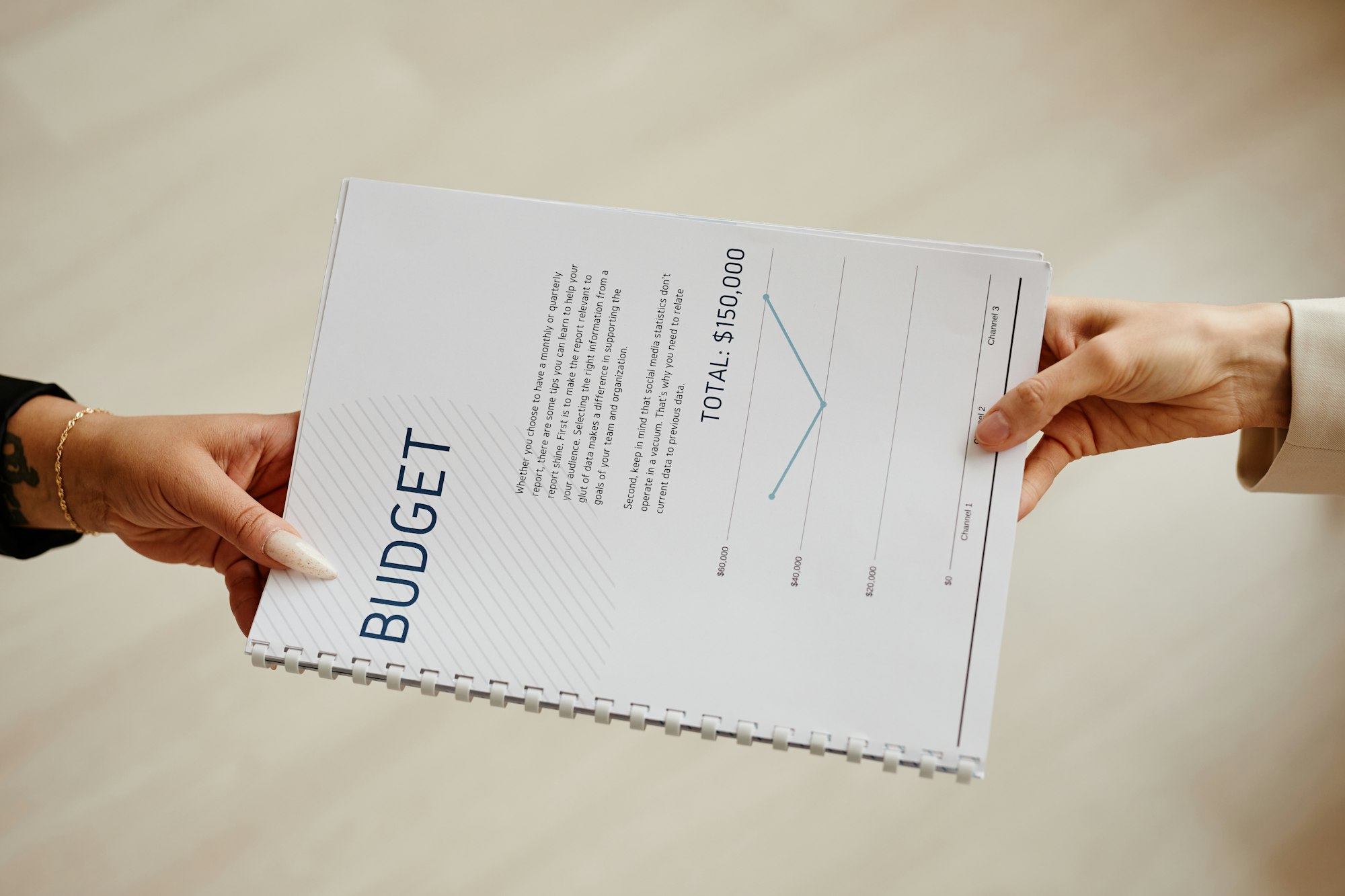
Budget overruns. Two words every project manager dreads. Despite meticulous planning, unexpected costs can creep in, throwing your project timeline and goals off balance.
Whether you’re managing a small team or leading a sizable initiative, budget management is a critical skill that requires constant attention and fine-tuning.
Is there a surefire way to prevent these overruns? Probably not. But there are numerous effective techniques you can employ to manage them when they occur:
As the saying goes:
“An ounce of prevention is worth a pound of cure.”
In the following sections, we’ll dive into these strategies and more, equipping you with the tools you need to handle budget overruns deftly and confidently. Let’s get started.

When approaching a new project, the importance of setting realistic budget expectations cannot be overstated. Without proper planning, you may find yourself overwhelmed with unforeseen expenses, leading to budget overruns and project delays.
To avoid such pitfalls, it’s essential to establish a comprehensive and detailed budget right from the start.
First, gather all relevant data and insights about the project’s scope and requirements. Engage with all stakeholders to understand their expectations and constraints. This collaboration ensures that no critical expense is overlooked, providing a solid foundation for your budget.
Next, consider the historical data and lessons learned from previous projects. Leveraging this information provides a more accurate estimation of costs and can help identify potential risk areas.
By analyzing past projects, you can make informed decisions and set more precise financial boundaries.
Additionally, make use of cost estimation tools and software. These tools can help you model different scenarios and refine your budget based on various assumptions and variables.
By utilizing these resources, you can ensure your budget aligns with realistic and achievable goals.
Once the initial budget is set, communicate it transparently with your team and stakeholders. Make it clear that the budget is a living document that may need adjustments as the project progresses.
Regular reviews and updates allow for early detection of potential overruns, giving you the flexibility to reallocate resources or scale back to stay within budget.

One of the most effective ways to ensure budget adherence in a project is by utilizing Agile methodologies. Agile offers a flexible and iterative approach that allows for continuous adjustment and realignment, which is crucial for staying on budget.
By breaking the project into smaller, manageable sprints, you can closely monitor the progress and costs at every stage. This means you’re in a better position to foresee potential budget issues early on and take corrective actions before they escalate.
Additionally, Agile fosters closer collaboration among team members and stakeholders. Frequent communication and feedback loops help everyone stay aligned with both the project goals and the budget constraints.
When everyone is on the same page, it’s easier to make informed decisions that can prevent budget overruns.
Another advantage of Agile is its emphasis on delivering the most valuable features first. This priority-based approach ensures that the core functionalities are budgeted and delivered effectively, which can provide a safety net if financial constraints become tighter as the project progresses.
Ultimately, by adopting Agile methodologies, you’re not just managing a budget; you’re continuously optimizing it in response to real-time feedback and evolving project needs.
This iterative process helps you stay within the financial boundaries while still delivering a high-quality product.

When managing budget overruns, prioritizing tasks becomes crucial. Identifying the essential project components that deliver the most value allows you to allocate funds more effectively.
Focus initially on the “must-have” deliverables that are critical to your project’s success. These key tasks are the foundation of your project’s value, so ensuring they’re well-funded can often prevent costlier issues down the line.
To optimize costs, consider adopting a top-down budgeting approach. This method involves starting with the overall project budget and then distributing the funds according to priority.
Begin by estimating the costs associated with these high-priority tasks and allocating budget accordingly. This might also involve paring down the project’s scope to concentrate on what truly matters.
By doing so, you ensure that the most resource-heavy deliverables receive the attention they deserve.
Moreover, integrating cost-effective solutions without compromising on quality plays a pivotal role. Sometimes, less expensive alternatives or more efficient processes can achieve the same results.
Reviewing past projects and current economic conditions can guide you in making informed decisions about where to cut costs or invest more heavily.
Continual tracking and reassessment of your project budget is paramount. Regularly monitor expenditures and compare them against your budget to spot potential overruns early.
This proactive approach allows you to make necessary adjustments in time, preventing minor financial issues from escalating.
By prioritizing tasks and optimizing costs, you create a robust project plan that maximizes value while staying within budget. This strategic allocation of resources ensures that even when budget constraints appear, the project’s core objectives remain intact and progress continues smoothly.
When it comes to negotiating with vendors, the key is preparation and communication. First, understand exactly what you need and outline it clearly.
This helps avoid any misunderstandings later on. Do your research to understand fair market prices, so you know the benchmarks for negotiations.
Start Early: The earlier you start negotiating, the better. Early discussions can secure discounts for advanced orders or bulk purchasing.
Build Relationships: Developing strong relationships with vendors can be advantageous. When vendors trust you, they might be more willing to offer better terms or flexible payment options.
Leverage Competition: Make sure vendors know that they are competing for your business. This can often drive down prices as vendors offer competitive bids to secure your contract.
Package Deals: Consider bundling services or products together. Vendors might provide discounts for larger orders, helping you secure materials at lower prices.
Always document everything during negotiations. Having written agreements helps avoid any future disputes and ensures all parties are on the same page.
Contingency planning acts as a financial safety net for your project. By identifying potential risks and allocating a contingency budget upfront, you can swiftly address unexpected costs without derailing the entire project.
This proactive approach not only provides peace of mind but also allows for more flexible decision-making, ensuring that you’re prepared for both foreseen and unforeseen challenges.
Project budgets should be reviewed regularly to ensure ongoing accuracy and adherence to financial goals.
Ideally, a review should occur at least once per month, but more frequent reviews, such as bi-weekly or even weekly, can provide earlier detection of discrepancies.
Regular reviews allow you to adjust forecasts, manage deviations promptly, and keep the project on track financially.
Watch for signs like increased requests for additional funds, frequent scope changes, delayed milestones, and consistent underestimation of costs.
Additionally, poor communication and lack of regular financial updates can signal upcoming budget issues. Identifying these warning signs early can help you take corrective actions before these issues escalate into significant overruns.
Employing strategies such as prioritizing tasks to focus on high-value activities, negotiating better terms with vendors, and leveraging technology for efficiency can be highly effective.
Additionally, adopting Agile methodologies allows for iterative progress and regular reassessment, which can help in reallocating resources wisely.
Regularly reviewing and optimizing processes to eliminate waste and redundancies also contributes to substantial cost savings.
Historical project data offers valuable insights into past budgeting successes and failures. Analyzing this data can help you identify recurring patterns, accurate cost estimations, and potential risk areas.
By leveraging lessons learned from previous projects, you can make more informed decisions, set realistic budget expectations, and enhance overall budget planning accuracy.
In summary, managing budget overruns is crucial for the success and sustainability of any project. By setting realistic budget expectations, preventing common pitfalls, and implementing effective strategies, you can significantly mitigate risks and keep your project on track.
Utilizing agile methodologies and prioritizing tasks ensures that you can adapt to changes without losing sight of your financial objectives. Additionally, negotiating with vendors can yield cost savings that benefit the overall budget.
It’s essential to stay vigilant and proactive throughout the project’s lifecycle. Regularly reviewing financial reports and conducting cost-benefit analyses will provide valuable insights into where adjustments may be necessary.
Remember, managing a project budget is an ongoing process that requires attention, flexibility, and a willingness to make tough decisions when needed.
Keep these techniques in mind, and you’ll be better equipped to handle budget challenges as they arise, ensuring your project not only stays within its financial limits but also achieves its desired outcomes. Thank you for reading, and we wish you the best in your project management endeavors.



